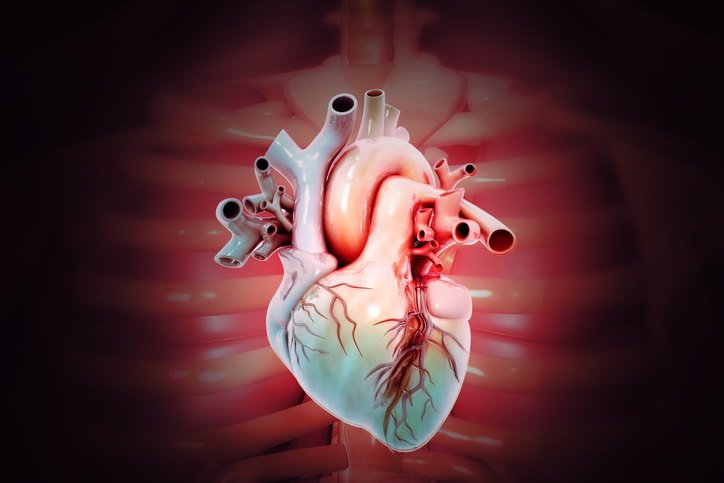A Detailed Overview of ATTR Cardiomyopathy
By Kevin M. Alexander, MD, CardioNerds - Last Updated: February 24, 2025CardioNerds Academy member Georgia Vasilakis Tsatiris, MD, The University of Pittsburgh Medical Center, is joined by expert faculty Kevin Alexander, MD, FACC, FHFSA, of Stanford Health Care, to discuss the characterization and cardiovascular-related impact of transthyretin cardiac amyloidosis (ATTR-CM), which can result in cardiac dysfunction and progressive heart failure.
Dr. Georgia Vasilakis Tsatris: Hi everyone. My name’s Georgia Vasilakis Tsatiris. I’m a PGY-3 and rising Chief Resident at the University of Pittsburgh Medical Center and a fellow of the CardioNerds Academy. Today we will be discussing very exciting new data from the ATTRibute-CM trial and its new insights into the treatment of the TTR cardiac amyloidosis, particularly related to its impact on cardiovascular related hospitalizations and survival. This data is hot off the press and presented recently at the 2024 American Heart Association or AHA annual meeting.
We once again have the privilege of speaking with Dr. Kevin Alexander, who’s an Assistant Professor of cardiovascular medicine at Stanford University School of Medicine. While he sees a wide variety of advanced heart failure in transplant cases clinically, Dr. Alexander has expertise in diagnosing and treating cardiac amyloidosis, a common rare disease that is an underdiagnosed cause of heart failure. Dr. Alexander is at the forefront of enhancing our understanding of this condition, and with grant support from the National Institutes of Health and the American Heart Association among other sources. Dr. Alexander, we’re all excited to learn from you and it’s so great to see you again.
Dr. Kevin Alexander: Well, thank you. Thanks for having me back, Dr. Vasilakis and CardioNerds. I look forward to chatting.
Dr. Georgia Vasilakis Tsatris: Absolutely. So as we talked about in our series back in June, transthyretin cardiac amyloidosis is a common rare disease and is characterized by the destabilization of the TTR tetramers and accumulation of toxic amyloid fibrils in the heart leading to cardiac dysfunction and progressive heart failure. Could you please talk to us about the impact of cardiovascular related hospitalizations in patients with ATTR cardiomyopathy and its association with mortality?
Dr. Kevin Alexander: Absolutely. So as we learn more about the natural history of ATTR-CM, we recognize that it’s a disease that happens over many years, and it’s a wide spectrum of manifestations. And I think historically what we’ve thought of ATTR-CM is really more of an advanced stage. Once a patient is being hospitalized for heart failure, that reflects that this patient has a more advanced level of disease and that confers an increased risk of morbidity in terms of repeat hospitalizations, but also a higher risk of death in the near future. And so I think hospitalization in ATTR-CM, as well as other cardiopathies is really a harbinger of poor outcomes to come.
Dr. Georgia Vasilakis Tsatris: Thank you for that, Dr. Alexander. And one of the classes of treatments we talked about before for ATTR is transthyretin stabilizers. One of the most well-known ones is the FDA approved Tafamidis and recently studied in the ATTRibute-CM trial Acoramidis, a near complete TTR stabilizer. Could you please summarize the mechanism of action of these drugs for us?
Dr. Kevin Alexander: Absolutely. So currently transthyretin stabilizers represent the mainstay of treatment for this condition and are the only FDA approved drugs for treating ATTR-CM, as you mentioned, what happens in the pathogenesis of ATTR-CM?
Just to recap, transthyretin is a protein that’s produced predominantly by the liver, but also the retina and choroid plexus and is secreted as a homotetramer. So four like units of protein bound together, and normally it transports thyroid hormone and vitamin A throughout the body. And individuals that develop ATTR, they have a disruption or dissociation of these tetramers into monomers. And these individual monomers are very thermodynamically unstable and have a propensity for misfolding and aggregating into amyloid fibrils. So that dissociation represents the rate limiting step in amyloid formation. So the way stabilizers work is by, there’re small molecules that potently stabilize the transthyretin tetramer, thereby decreasing the rate of dissociation into these monomers in subsequent amyloid formation.







 © 2025 Mashup Media, LLC, a Formedics Property. All Rights Reserved.
© 2025 Mashup Media, LLC, a Formedics Property. All Rights Reserved.